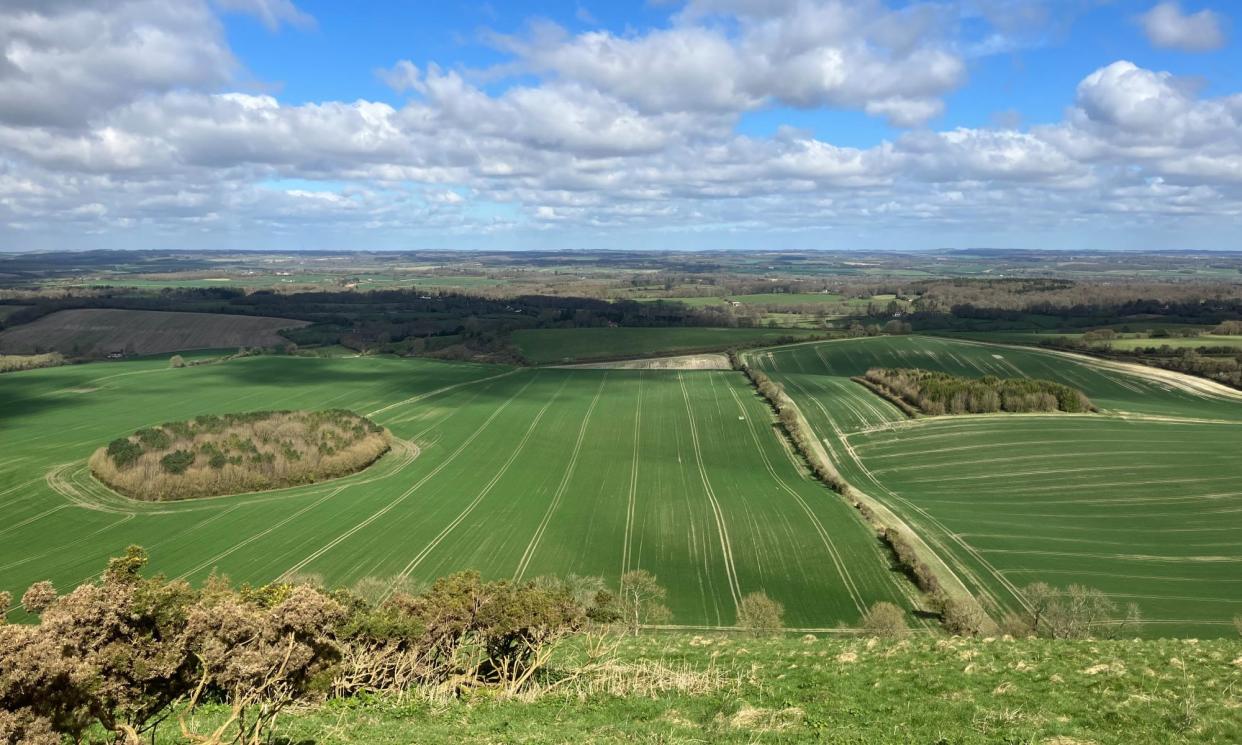Country diary: A day of so many nature interventions

In these showery, rainy, downpour days, spring on the downs has a look of the substrate that forms it – a blue-merle purling of flint and chalk. The contrasts of dapple-grey and white snag my eye as a deeply familiar marker of spring that I always forget to look for. It’s there in the chalk tracks and cream-plough fields, hail-full clouds, a snow flurry against an iron sky, blossom by a flint wall. Skylarks, meadow pipits and woodlarks rise up, singing against it all.
The woodlark is a relative newcomer (or returnee) here, appearing first on stubble fields that are left to overwinter under agri-environment schemes. In what seems to be a continuing range expansion from a lowpoint in the 1980s, they have bred successfully here in the last few years, and now their song rains down in a more melodic, simpler hallelujah than the skylark’s brassy notes. Sometimes I hear them from the back garden.
Climbing up the side of the down, bright yellowhammers call sweetly, but not strongly enough yet to complete their repeated phrase, so the songs hang in the air all the way up – a stepped list of unfinished sentences. The same yellowhammer pops of colour appear in the stubby brushes of coltsfoot flowers. Around the big milky puddles on the Wayfarers track are flirtatious little flocks of stonechats.
I walk up again two days later with Lucy “Lapwing” Hodson, wildlife presenter and self-confessed nature nerd. I’m thrilled to show her my (gentle) stomping ground and disappointed when the garden woodlark is a no-show. We walk the winding lane to the big down, chatting breathlessly, when birdsong stops us both at the same time. We listen on an indrawn breath, our hands involuntarily gone to our hearts, to the beautiful Lullula arborea – the fluttering, avian heart of Thomas Hardy – and exhale the word: “Woodlark!”
It is one of many such “nature interruptions” today: a bee-fly, hares, cronking ravens, white violets, a yellowhammer with its head lit up like a lightbulb out in front, which leaves threads of our own conversation suspended in the air, unfinished, redirected, weaving into new things, like gossamer.
• Country diary is on Twitter at @gdncountrydiary


